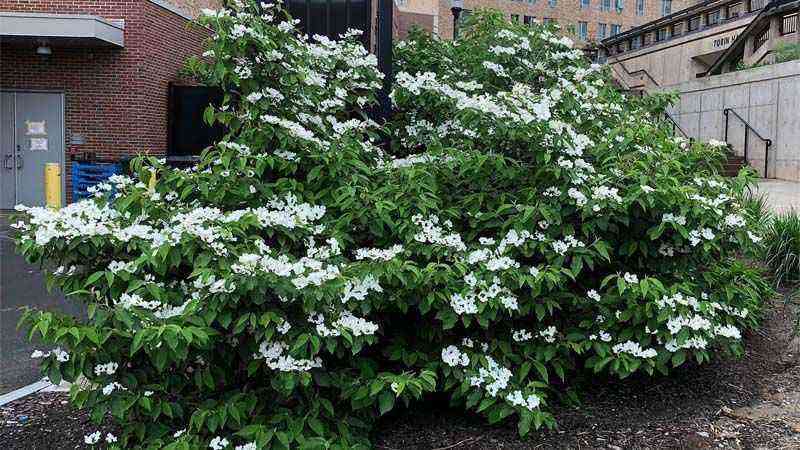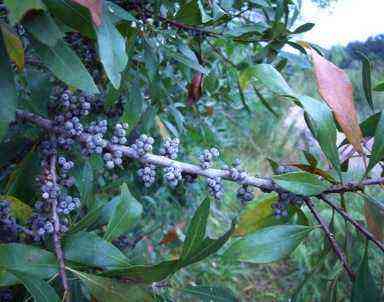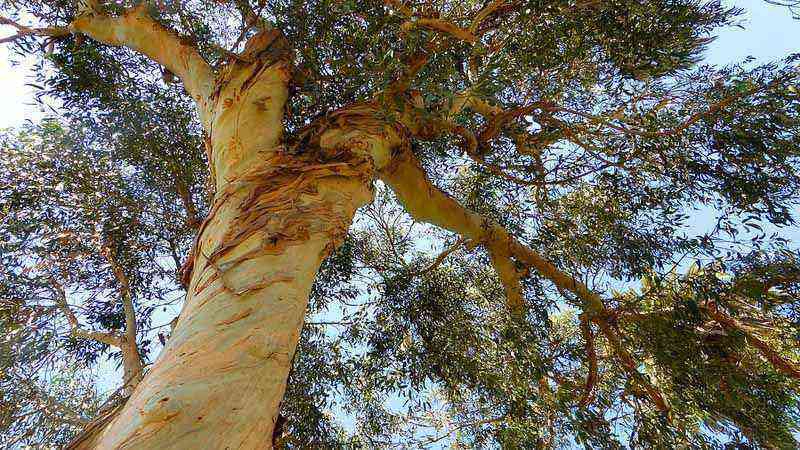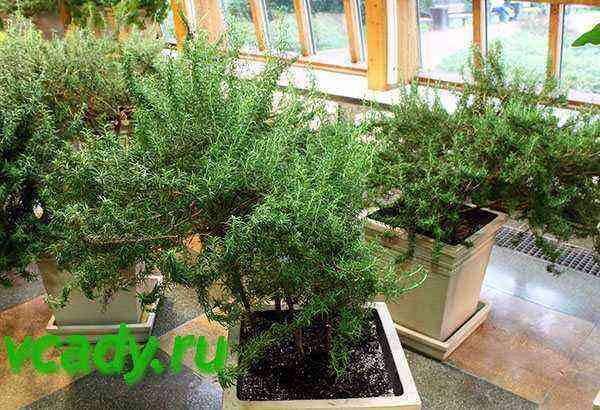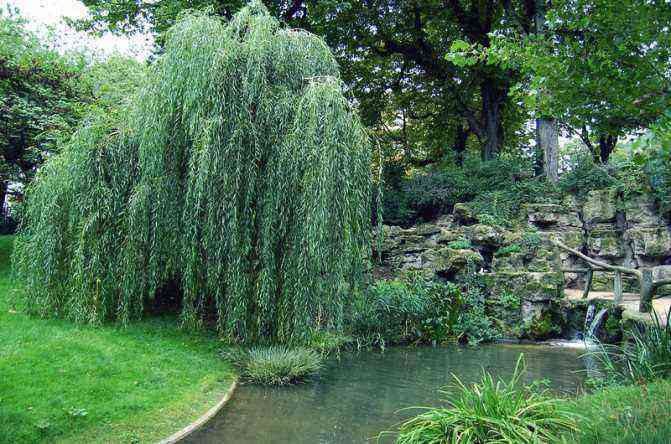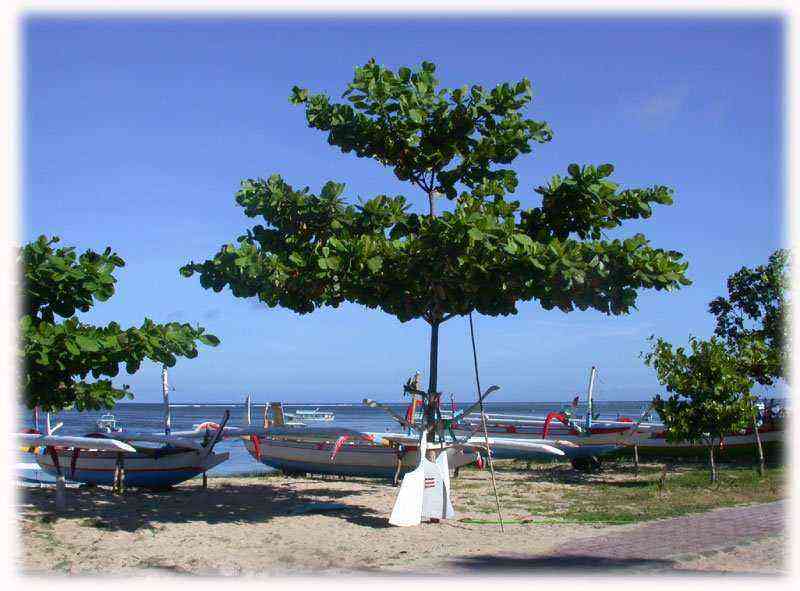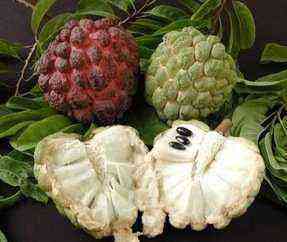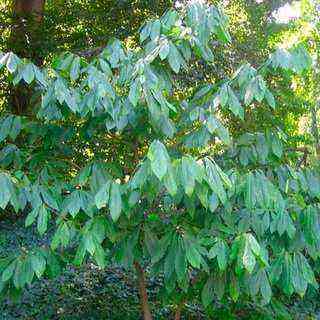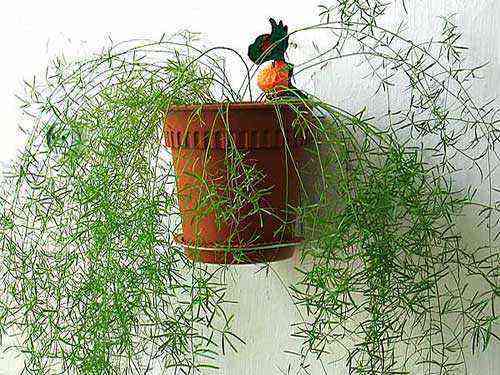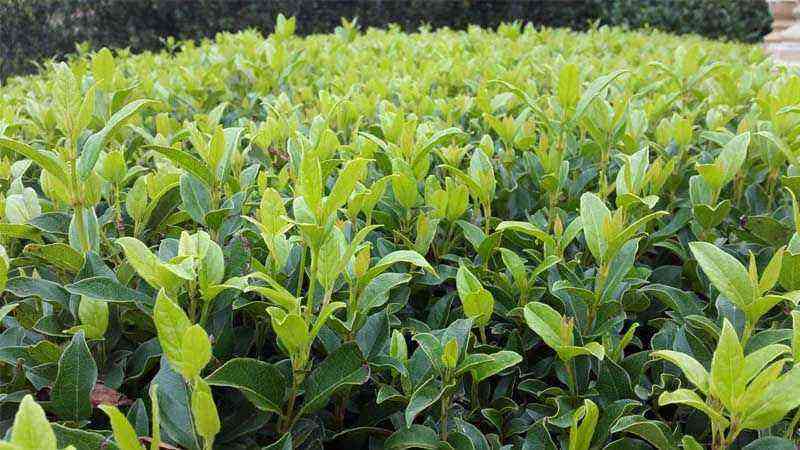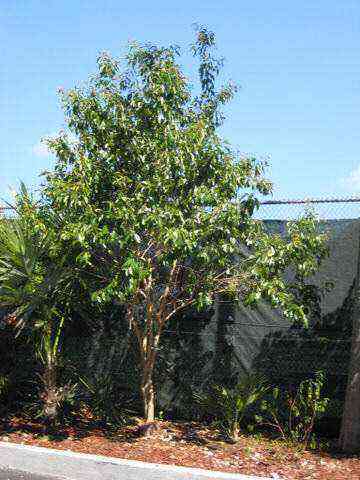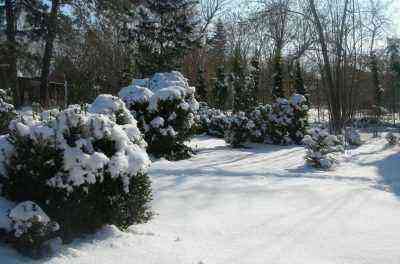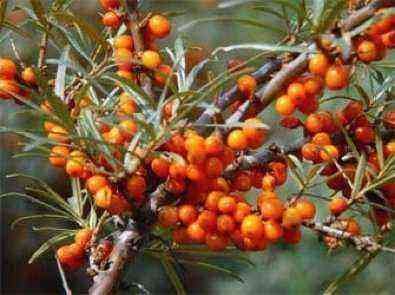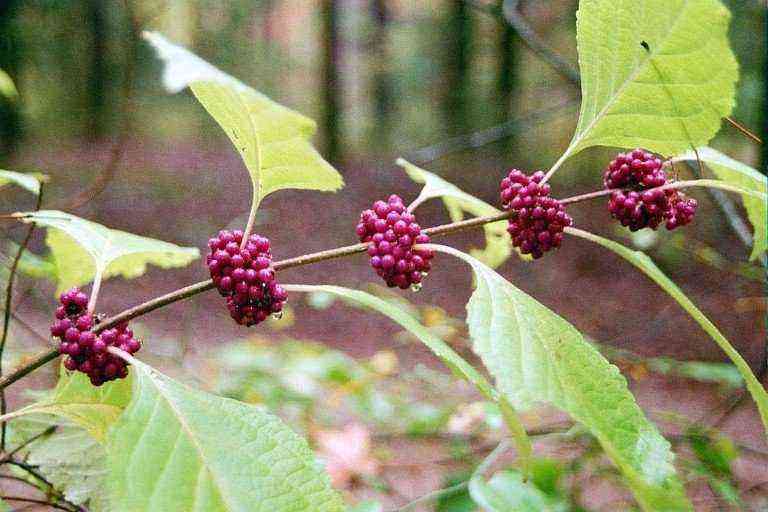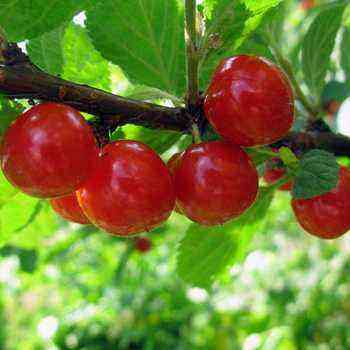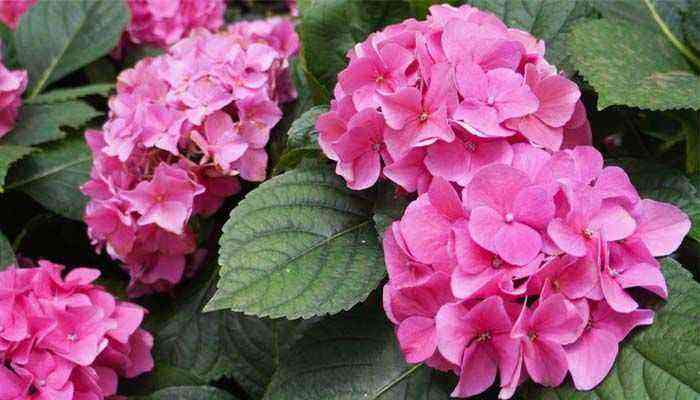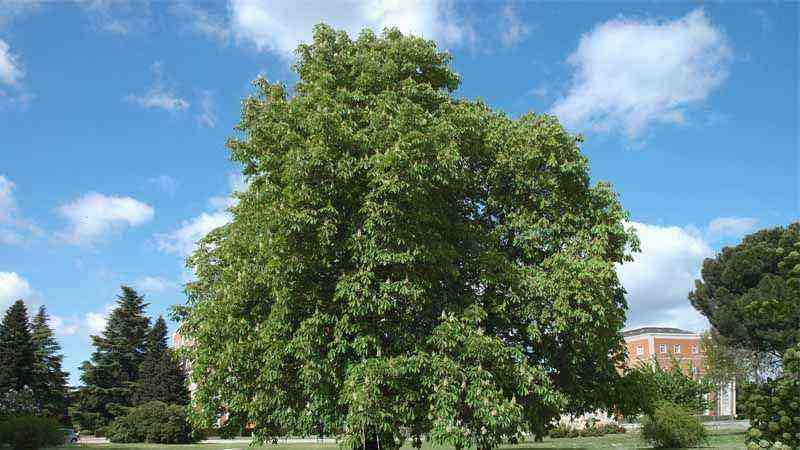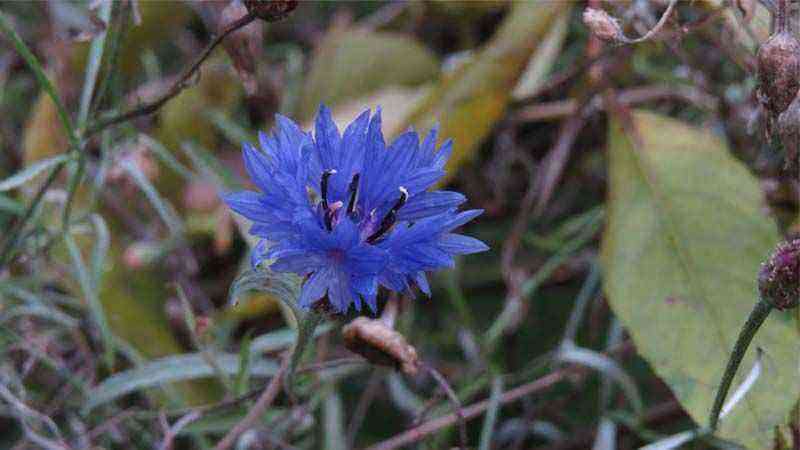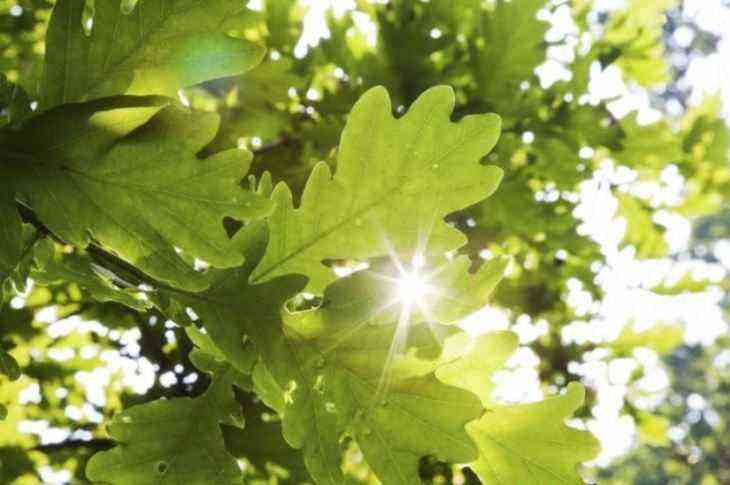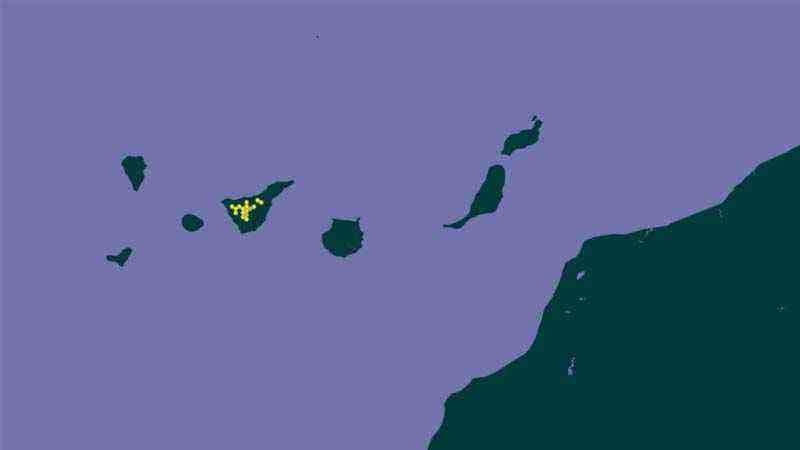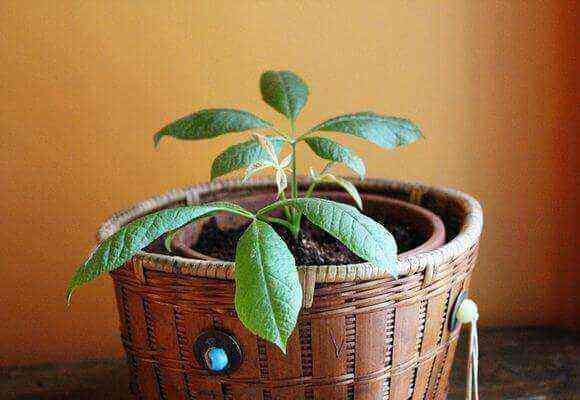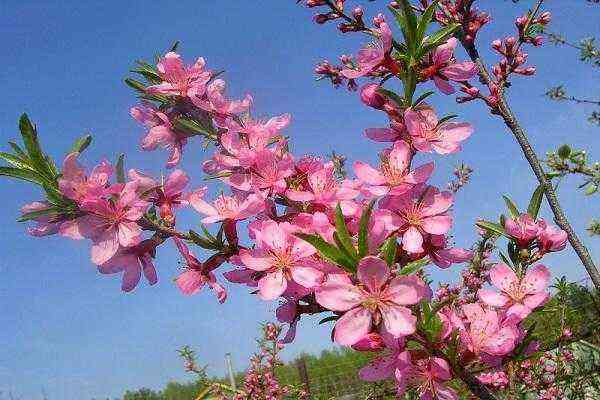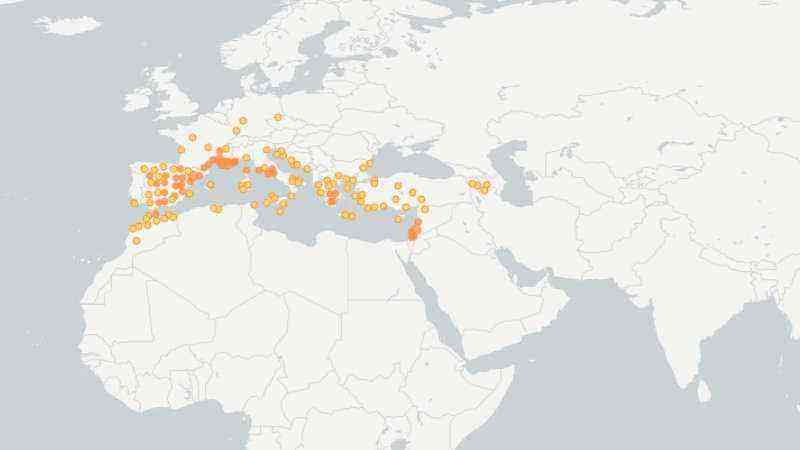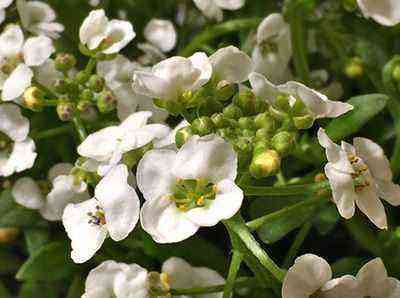Top dressing of thuja in the fall
An important stage in the cultivation of thuja is the correct feeding of the plant, since errors in fertilizing can lead to its death.
What microelements are lacking in the soil can be understood by the appearance of the thuja:
- Lack of iron – the needles color change. On some branches, it becomes light yellow in color, or turns white.
- Lack of phosphorus – at the ends of the shoots, the needles are painted in a red-violet color.
- Lack of potassium – the needles at the top turn yellow.
- Lack of nitrogen – the number of young shoots decreases, and signs of needles discoloration appear.
- Magnesium deficiency – the top of the crown turns yellow.
By the appearance of the thuja, you can understand what elements are missing in the soil
With an excess of nitrogen, too active growth of young shoots begins. However, before the onset of winter, they do not have enough strength to ripen, and they freeze out.
After planting and in the process of growth, thuja needs constant feeding with minerals for good rooting and growth. A plant on its own is capable of extracting nutrients from the soil only in adulthood.
Autumn top dressing technology
Mainly autumn feeding is carried out in summer… It is possible to introduce it in September or October only where winter comes late and the climate is quite mild.
Top dressing in September-October is possible in mild climates
When introduced in the autumn, young shoots grow actively, which is extremely undesirable, since they will not have time to ripen before winter and will freeze out.
The final is made mid August… In the summer, they are brought in in order to help the bush gain strength and prepare for wintering. It is also necessary to use organic fertilizers once a season.
In the autumn season, it is recommended to feed:
- Complex fertilizer for conifers to improve growth. These preparations provide the plant with a good appearance;
- Organic… They help to quickly saturate the soil with the necessary nutrients. These include:
- peat;
- slurry manure;
- compost.
Time of work
In some situations, feeding with nutrients in the fall is necessary:
- to improve the general agricultural background;
- quickly saturate the soil with useful substances;
- after the autumn transplant.
To get the most out of your nutritional formula, there are a few simple rules to follow:
- the minimum break between dressings should be 14 days;
- do not water dry soil on the trunks with useful substances, and water it well a day before feeding;
- do not use various fertilizer complexes that contain the same substance.
Strawberries at home all year round! These veneers are 100 times better than a false jaw! And there are pennies! Up to 15 kg of strawberries every month! False dental veneers for a penny! Up to 15 kg of strawberries every month! Famous overhead veneers are now in Russia!
It can be planted both in spring and autumn, but many gardeners prefer autumn. It is believed that conifers take root better at this time than at the beginning of the year. It is important to choose the right time for planting, because its result depends on it. In the spring, you can start planting seedlings after warming, the approximate dates are in April.
It is best to replant this tree in the fall in September, as it takes about a month to root. In October, you can also plant, but only in those regions where the climate allows it, frosts do not come at least until the middle of the month. For reliability, you need to choose a seedling with a closed root system, growing in a pot or container, and not an ordinary one with bare roots.
In most regions, in the fall (November) it is already too cold to plant trees, because they will not have time to take root. The same applies to thuja. If you plant it in November, then only in the south, and mainly those plants that are in containers. They take root more easily, because they need to grow fewer roots than those thujas that are simply dug out of the ground.
Fertilization rules
Fertilization in the fall is performed:
- if the soil needs improvement;
- when transplanting plants;
- for quick saturation of the soil with useful substances.
Top dressing is necessary when transplanting thuja in the fall
For this purpose, growth stimulants, special complex fertilizers for conifers are introduced into the soil. When applying fertilizers, the following recommendations should be taken into account:
- Fertilizers must be applied after a certain period of time. Between the introduction of fertilizing with various microelements must pass 14 days.
- Before fertilizing, it is necessary to water the soil around the plant a day. Top dressing in dry soil will burn the root system.
- Before making fertilizing from different manufacturers, it is recommended to carefully read the composition so as not to add the same microelements twice. This can lead to oversaturation.
It is necessary to carry out top dressing by filling up the soil… To do this, you can use:
- bone meal;
- ash;
- peat;
- compost.
Bone flour
This bedding will not provoke the growth of young shoots in winter… Mature plants do not need additional feeding.
If the soil is saline, liming is necessary. Gypsum is introduced into the soil and dug up. In September or October, quicklime must be added to the podzolic soil.
Benefits of autumn planting
It is necessary to prepare thuja for winter from the end of summer or in early September, completely stopping feeding. This approach will slow down the active growth of the shrub – the plant will begin to accumulate the forces necessary for high-quality wintering, and will not spend them on the development of new shoots.
Thuja practically does not need feeding – it is better to rarely feed this shrub than to get carried away with fertilizers. The only exceptions are recently planted specimens, which require a large amount of nutrients and trace elements for active growth, as well as rare varieties.
Autumn is the perfect time to apply fertilizers that will help your crop survive the winter better. The following rules should be followed:
- the last feeding should be at the beginning or middle of September, but it is better to refuse additional feeding in the last days of August;
- do not apply nitrogen, bacterial and micronutrient fertilizers for thuja after the specified period;
- You can replace fertilizers with bone meal, wood ash, peat or compost – organic matter will benefit the shrub, it can also be used as mulch.
We offer you to familiarize yourself with German soup: ingredients, recipe with photo, cooking features
Starting from the second decade of October and at the beginning of November, they resort to water-charging irrigation, designed to exclude the death of thuja in winter and with the onset of spring. A strong loss of moisture at any time of the year significantly reduces the immunity of the ephedra, leads to wrinkling of the bark and fragility of the branches, and reduces the decorative effect of the culture. The ideal time for work is during the period of complete leaf fall in deciduous trees.
During water charging irrigation, you should take into account a few simple recommendations:
- depending on the size of the thuja, 5-8 buckets of water will be needed to ensure sufficient soil moisture to a depth of 1,5 m;
- organize abundant watering for all varieties, including newly planted thujas;
- You can check the degree of moisture by squeezing a lump of earth from the trunk circle in your fist – if a small imprint remains on the palm of your hand, and the ball does not crumble, watering has been carried out correctly. The absence of a trace indicates waterlogging, the loss of shape indicates a lack of water in the soil.
An excessive amount of moisture in the soil will lead to rotting and freezing of the root system, which in the future will provoke the death of thuja. This is why it is important not to overdo it by using the exact amount of water.
Preventive treatments against pests increase the immunity of thuja and have a positive effect on the quality of wintering. Sick or damaged specimens are much less likely to recover from cold weather, even if all other stages of preparation and shelter were carried out correctly.
As a prophylaxis in the fall, thuja are treated with a Bordeaux mixture, the “Commander” or “Kartotsid” preparations, maintaining an interval of 14 days. Observe the dosage indicated on the package so as not to harm the shrub.
Pruning thuja
Tui respond positively to pruning at any time of the year, except for winter, and a tidy crown will add strength to the plant, make it less susceptible to negative factors. In addition, this procedure improves ventilation inside the bush, preventing the development of bacterial and fungal diseases.
It is necessary to remove yellowed and dried branches, sick and sunburned shoots. For work, it is better to use pruning shears and garden shears with sharp disinfected blades – with the help of these tools it will be possible to cut the crown and give it the desired decorative effect.
To carry out pruning in the process of preparing the thuja for wintering, choose a dry and calm day, it is important that there is no rain in the coming days – the places of the cuts will have time to tighten, which will exclude infection with infections.
The pruning process is simple – just pay attention to the following points:
- remove all diseased and suspicious shoots to healthy tissues, the direction of the cut should be oblique;
- carefully examine the shrub, pruning branches if necessary;
- after sanitary removal of shoots, give the crown the desired shape.
It is not necessary to use a garden pitch for cuts – the fabrics will tighten on their own if the work is done correctly.
Thuja pruning is carried out in dry weather at a temperature of at least 4 degrees, preference should be given to cloudy days – in such conditions, the likelihood of the appearance of grayish-brown and yellow spots from strong evaporation of moisture is minimal. The ideal time is mid-autumn, on the eve of cold weather, you should not resort to the procedure, since the cut shoots will not have time to recover.
How to prepare thuja for winter? At the beginning of autumn, the active growing season of thuja ends, which means that stimulating the plant with fertilizers threatens to do more harm than good.
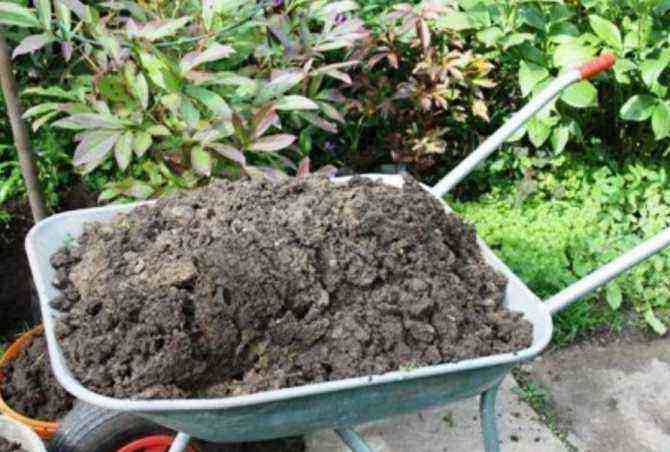

To support the plant after autumn pruning or transplanting, it is enough to add peat, wood ash or compost to the soil.
Very important! Top dressing is stopped from the second half of August. This is especially true for fertilization with mixtures that contain nitrogen, which stimulates the active growth of new shoots. Young twigs will not have time to adapt to frost and will begin to die off – the whole plant may die.
The advantage of autumn planting is a moderate stable temperature, air and soil humidity, which contribute to the good survival of the transplanted plant. In the fall, you can use fallen leaves or dry grass for introduction into the soil as a nutrient material, and then for mulching the earth on the trunks. And another advantage is that by planting it in the fall, the gardener saves time in the spring, when he can do other work in the garden.
Watering
If the fall is dry, then the evergreen should be watered regularly. Before the period when frosts are already possible, the plant should be watered especially carefully, such watering is called moisture-charging. If a lot of moisture has been received for the tree, then the roots will be able to collect enough of it and hold it for a long time.
Additional fertilizing
Thuja reacts to feeding with growth and development. However, in winter, a tree or shrub needs peace and strength to overwinter. Therefore, it is not advised to feed this ephedra. Nutrients can provoke the growth and formation of a new part of the crown. The overgrown branches will simply die under the influence of the cold, and the condition of the plant will greatly worsen because of this. But thuja in pots can be fed with liquid micronutrient fertilizers.
In order for the coniferous tree to winter well, they carry out the treatment of thuja from diseases and pests in the autumn for the purpose of prevention. Processing can be divided into two stages. The first is performed from diseases, and the second, respectively, from all kinds of parasites. Bordeaux liquid and Copper sulfate are used for fungal infections. For parasites, Fufanon-Nova, Actellik are used.
We offer you to familiarize yourself with How to cook pike fish cakes
Foliar top dressing
Thuja takes foliar feeding well in the form of irrigation.
With root application, thuja uses only twenty percent of the nutrients, while with irrigation, nutrients are absorbed by 80%. Complete assimilation of nutrients by the plant occurs within 5 hours.
For foliar feeding, you can use the drug “Zircon“. This drug is sprayed onto the crown of the plant, which opens up and absorbs nutrients well. Such types of feeding are performed 3 times, with a regularity of 1 time in 14 days.
Among the mineral fertilizers recommended for fertilizing thuja, the most effective is “Kemiru wagon“. It is a balanced complex of minerals and trace elements that can be used for both foliar and root feeding.
Thuja foliar feeding
Root
When applying fertilizers under the root, both liquid and dry fertilizers can be used. For these purposes, it is best to use compost… A trunk circle is laid for them and mixed with the soil. The layer thickness should be not less than 5 cm.
You need to mix very carefully, since the root system of the thuja is located close to the surface of the earth. Bone meal can be added to the humus.
Granular fertilizers are poured around the seedling, and after 2-3 waterings they decompose and are completely absorbed into the soil.
Liquid fertilizers must be diluted according to instructions on the package. The most proven drugs:
- Green Guy – lush pine;
- Agrecol for conifers (autumn).
Rule 5. Covering the root zone
Thuja has a superficial root vegetative system. In cold weather, the roots often freeze through without shelter.


Caring for thujas in the fall necessarily includes mulching – the best way to insulate the roots and preserve the specimen
An additional plus to the heat-saving characteristics of mulch will be the introduction into its composition of components capable of releasing heat during decomposition (peat, compost, humus). You can also add a little straw, dry foliage, fallen needles there.

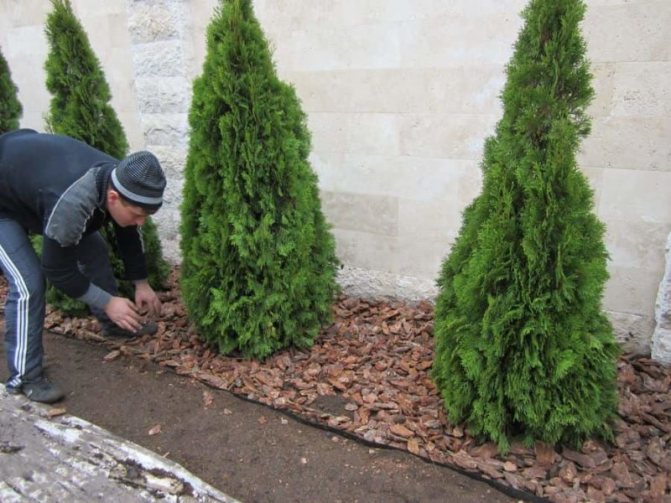
The entire trunk circle is covered with a mulching composition. Layer thickness – not less than 15-20 cm
In regions with harsh winters, the mulching layer can be covered with spruce branches or sprinkled with a thick layer of dry foliage or straw.
Autumn care for thuja
With proper care in the fall and the necessary operations to prepare the plant for winter, you will provide it with the necessary conditions for successful wintering. What you should pay attention to:
- Plant feeding.
- Stimulation of the root system.
- Watering.
- Pruning.
Stopping the application of nitrogen fertilizers
In the fall, you should stop feeding the thuja with nitrogen. This fertilizer stimulates the formation of young shoots. By the beginning of cold weather, they will not have time to get stronger and may die over the winter. Top dressing with this fertilizer should be carried out for the last time in mid-August.


Root system stimulation
Another, no less important operation that you must carry out in order to properly prepare the thuja for winter is to stimulate the root system. Not everyone needs it, but only young shoots and those plants that were transplanted to a new place before winter. To do this, treat the shrub with drugs that stimulate root growth: Kornevin or Zircon. Dilute the preparations in 10 liters of water: Kornevin – 10 g, and Zircon – 40 drops. Water the tree with the resulting solution. A few days after this procedure, it is required to water the bush with 30 liters of water, pouring it into the trunk circle. This procedure is needed to drink moisture from the roots and prevent them from freezing.
Watering
If the region in which you live is characterized by autumn without a lot of rainfall, then you should regularly water the thuja. The coniferous bush loves moisture, but keep in mind that its excess will lead to rotting of the roots. Water the plant abundantly before winter. Then the moisture will saturate the roots for a long time, and the frozen ground around the bush will protect them from hypothermia due to the longer freezing of the soil.
Trimming
Pruning is another essential step in the fall maintenance of a coniferous tree. It provides him with healthy development and beauty of form. It is very important not to overdo it when pruning a coniferous bush in the fall. If you bare him too much, then he will not have time to recover and may not endure the winter cold.
What is pruning for? You need to prune, first of all, to remove dry and diseased shoots. Untimely processing can lead to the death of the entire thuja.
It so happens that not all of the branch is affected, but only a small part of it. Then you shouldn’t delete it completely. Cut off only the affected part. You can only run your hand along the branch, and the dried, diseased needles will fall off by themselves. You may well expect that in the place of the fallen, healthy needles will grow and the tree will be saved.
Additionally, the thuja is cut to correct the shape. To keep the bush in its original appearance, cut the trunks that have grown strongly upward. This will also allow the side branches to grow. By pruning the tree, you create good air circulation and protect it from pests.
Thuja tolerates procedures for removing unnecessary processes in both spring and autumn. Nothing bad will happen if you prune a third time. There is no clear time frame for trimming. The main condition that you must adhere to when processing a plant is dry weather without precipitation and an air temperature of +4 degrees.
It is important to properly trim the thuja. To do this, follow these steps:
- Remove any dried, insect-damaged branches from the top of the coniferous bush.
- Cut off any sprouts that have come out upward.
- Remove excess branches from the inside of the plant.
You can shape any shape of the coniferous bush you want. Purchase a metal sculpting mold from your garden supply store and place it over the plant. When the free spaces are filled with shoots, remove the shoots protruding upward. This manipulation is called topiary haircut. In addition to it, there is a spherical and spiral pruning. These types of haircuts are carried out in the likeness of topiary pruning: the branches that stick out upward are removed until the bush acquires the desired shape.
Rule 1. About pruning
Care in the fall and preparation for the winter of conifers is the most crucial period. Among other procedures, pruning thuja is not the least important.
We offer you to familiarize yourself with Facade panels for plastering and methods of their installation at home
In the spring, it will ensure the normal development of the thuja and retain its shape. The main thing is to feel the measure and not to bare the tree too much.
Over-pruning will weaken the plant. In the cold, the consequences of mistakes in pruning can be the most deplorable – the plant will freeze out.


In the fall, pruning is reduced to removing dry, diseased twigs. And thinning the crown in the middle will improve air circulation and prevent pest control
Garden stores sell special metal molds designed to facilitate corrective crown trimming in the form of a ball or spiral. The form is set above the plant, the overgrown shoots protruding from the form can also be cut off before wintering.


Almost all types of tui lend themselves well to cutting and maintain their shape for a long time.
Do I need to feed the thuja in the fall
Thuja does not need special fertilization in the fall, except for the time after pruning the tree: then it should be fed. After these manipulations, the plant is weakened and must be carefully examined. If you notice pests: false scale insects or aphids, be sure to spray the bush with preparations to protect conifers from insects. After you have pruned the crown, feed the thuja using the following fertilizers:
- siderates;
- manure;
- complex mixtures for conifers.
The main thing to remember when feeding is a sensible measure. A large amount of fertilizer can lead to the death of the plant. This is explained by the fact that feeding strongly stimulates the development of the tree. Young roots and newly formed shoots are not able to withstand the cold and thuja can simply die.
The safest type of plant feeding in the fall is fertilization with peat, wood ash or compost. This type of feeding enriches the soil in which the thuja grows well, and at the same time is correctly perceived by the tree: fertilization does not lead to the active formation of young shoots.
Actions to prepare thuja for winter
Thuja is considered a frost-hardy coniferous tree. The exceptions are decorative varieties and recently planted trees that have not yet gotten stronger. With them, you should carry out the actions necessary to protect against low temperatures. After proper care of the thuja in the fall, it is necessary to prepare it for the winter.
- Insulate the soil with mulching. To do this, dig up the soil close to the plant’s trunk, remove all weeds and apply protective material. Suitable mulch: compost, manure, dry leaves, straw. The height of the insulating layer can reach from 10 to 30 cm.
- Insulate the bushes. To do this, you need to lift the branches of the plant up, pressing them against the trunk and securing them with wire or rope. Put a bag of light colors on top of the bush: photosynthesis processes take place year-round, so the plant needs a constant source of sunlight, otherwise it may turn yellow. The protective material should not fit snugly against the wood. This is necessary for constant air circulation.
- Use 5 liter plastic containers to cover the young tree. Cut off the bottom of the bottle and place it on top of the coniferous tree.
- Preventing bark burns is another important step in caring for thuja and preparing it for the winter. To do this, starting from February 15, from the side of an active source of sunlight, install shields near the tree.
The insulation is removed immediately after a stable positive temperature is established.
Shelter of an adult thuja before winter
The crown of an adult thuja is quite frost-resistant and perfectly tolerates severe frosts without damage, therefore, after 3 to 5 years of life, the aboveground part can winter without shelter. A superficial horse system is more sensitive and needs cover. A sufficient level of protection is provided by a powerful mulching layer of dry leaves and spruce branches.
In winter, additional protection is provided by a snow cushion, which can be created by periodically shaking off snow from the branches.
Occidental Thuja ‘Emerald’
Features of the regions

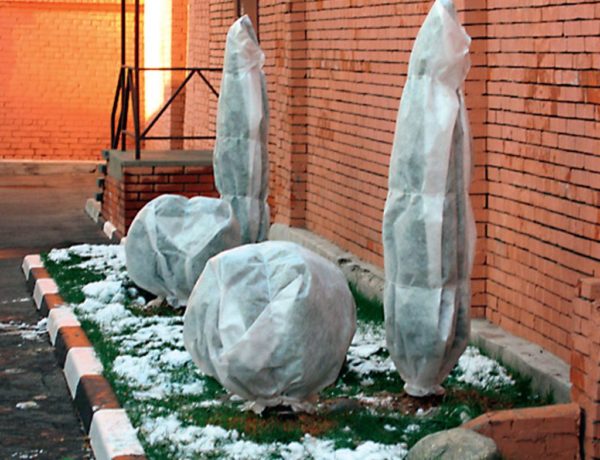
The shelter scheme for thujas for the winter may differ. It depends on the region in which the coniferous bush grows. For example, in the Middle Lane, the thickness of the mulch should be 15 cm. After warming the soil, all the necessary actions are taken to protect the crown of the plant.
In the Volga region, the difference in the preparatory procedures for the winter is to increase the thickness of the mulch by 6 cm.That is, the protective soil layer should be 21 cm.
On the territory of the Urals and Siberia, a large amount of snow falls, which can damage the thin branches of the thuja. To protect the bush, before covering it with a protective layer, build a frame made of tapered wire. This will prevent heavy snow from settling on the plant.
The main activities that will allow you to save thuja in winter
To make your green beauty pleasing to the eye, you need to take care of her. If we consider such a species as western thuja and all its forms, then in general we can say that these plants are unpretentious and tolerate negative temperatures well. However, other winter factors can be harmful. In order for the thuja to winter well, we begin preparation in the fall.
The first thing to do is to cover the thuja for the winter., moreover, only young plants, which are still weak, with thin tender shoots (first year of planting). The material for these purposes should be white, non-woven (for example, spunbond, agrotherm, lutrasil). It is best to prepare a bag from the selected material, which is simply put on the plant. Moreover, he should not tighten the thuja tightly. If you wish, you can build a frame made of wood, which is arranged around the plant. Then the frame is covered with material.
The shelter will allow the snow not to linger on the top of the thuja, it will roll… If you do not organize a shelter, then the top may deform, and wide spreading plant specimens (for example, a spherical shape) will acquire an unattractive appearance, because the snow will push the center, pushing the branches apart, and as a result, a void will form. In this case, the crown can be previously fixed with a rope.
Then you need to insulate the root system.… For this purpose, you can use the leaves, which are mixed with the ground. They will not only protect the roots from frost, but will also retain moisture, and over time they will rot and become an additional fertilizer.
The measures considered must be carried out in the second half of autumn, preferably before snow falls. Overwintering of adult plants can take place without shelter.
In winter, it is worth making sure that the thuja is not covered with snow, which can lead to the needling of the needles. The same rule applies to those who are used to throwing snow from paths onto plants, mistakenly assuming that it will be warmer for them.
In the spring, do not rush to free your beauties, because they can burn out from the sun… Wait until the ground is completely thawed and the temperature is above zero. It is even better if you additionally install shields that will shade the thuja.
Also, before winter and early spring, it is advisable to water conifers abundantly so that the earth is saturated with moisture. It should be borne in mind that the shelter can be made not only with your own hands, but also you can buy a ready-made special design in a specialized store.
For example, a 1,5 m high shelter for pyramidal plants “Winter Garden” costs about 550 rubles.
Mistakes to Avoid in Autumn Care
The following mistakes when preparing a thuja for winter can lead to its damage and death, so when caring for a tree, you should definitely know them.
- When does winter come? do not cover coniferous trees with protective material.
- The tree is not protected from active sunlight by shields.
- Instead of fertilizers for conifers, which you need to feed thuja, use preparations for deciduous trees.
- Pruning during the period of active sunlight. This leads to the fact that the needles acquire a brown tint.
It will not be difficult to properly care for an evergreen beauty in the autumn period. This does not require special knowledge and special skills. It is necessary to perform all of the above simple steps to care for this coniferous tree in the fall, be sure to cover the crown of the bush, as well as insulate the soil for the winter. Then this coniferous tree will decorate the personal plot, delighting with eternal greenery for many years.
In order for the thuja to survive the winter without problems, you need to properly feed the plant in the fall. The procedure is carried out carefully, without interfering with the plant to prepare for wintering. Top dressing of thuja in the fall is an essential part of autumn care, like mulching, pruning or sheltering young trees. The timing of fertilization must be observed. What to use for such feeding and how to carry it out? Let’s figure out how to grow thuja on the site, what kind of care is required.
Pests and diseases
The most common shrub pests include:
- thuja aphid;
- bark beetle;
- moth-ring;
- spider mite.
The most common diseases:
- cataract necrosis;
- pestalocyopsis necrosis;
- phomopsis necrosis;
- brown shute.
To combat and treat pests and diseases, it is necessary to use special means and process at the first signs of infection. But it is best to prevent ailments and the appearance of parasites, therefore, a thorough and regular inspection of the plant for harmful organisms is necessary.
In the autumn, when preparing thuja for winter, it will be good to do preventive treatment of ephedra from diseases and pests before sending it for winter.
- From fungal diseases (in particular from rust) – copper sulfate, Bordeaux liquid (30 g per 10 liters – for treatment, 10 g per 10 liters – for prevention) or special drugs – Hom, Abiga-peak (based on copper oxychloride), Acrobat MC.
- From pests (especially aphids) – Actellik, ordinary Fufanon or Fufanon-Nova, Rogor, Karbofos, Konfidor, Decis (apply everything according to the instructions).
Conditions for growing thuja
Thuja should grow in well-drained, fertile and moderately moist soil. On arid soil, it can die. You can take a ready-made soil for conifers available in stores, or a peat substrate mixed with rotted compost or pine bark. Around trees, gardeners recommend sprinkling the soil with forest soil or soil with mulch from needles and pine cones. In what kind of soil should the thuja be planted, taking into account the type of plant? It should be remembered that thuja western (Arborvitae) grows best on calcareous soil, and thuja eastern, or eastern cedar, loves acidic soil.
The site chosen for planting should be free of weeds, earth lumps. If thuja will be planted as a hedge, you need to prepare a piece of land at least 80 cm wide. The entire area is covered with black foil until planting so that weeds do not appear.
When planting thuja, they take a lot of fertile soil. Its amount should be three times the size of the hole. At the bottom you need to pour about thirty centimeters of soil, immediately spill it with water. Put a seedling on it, sprinkle it with earth, press the earth and water it again.
After planting the seedling, the mycorrhizal grafting material must be applied. To slow down the development of weeds and reduce the evaporation of water, pine bark is laid out in a thick layer around the thuja.
Why do you need top dressing
For normal growth and development, any plant needs a balanced diet. But the soil cannot remain fertile forever, every year there are fewer and fewer nutrients in it. Half of them are washed out with groundwater, half are absorbed by plant roots. Not receiving a sufficient amount of nutrients, the plant begins to hurt, and then it may die. How to recognize which elements are missing for proper development?

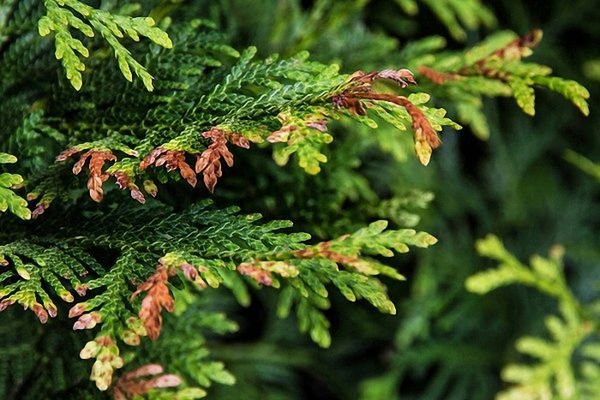
Signs of nutritional deficiencies in thuja
When to apply top dressing
You need to feed thuja under the following circumstances:
- if you need to quickly enrich the land with nutrients;
- to improve the agricultural background;
- after transplanting the plant in the fall.
How to feed thuja? Depends on the quality of the soil. Only the initial composition of the soil determines which fertilizer is suitable for a plant in a certain period. In the fall of thuja, feeding and basic funds are needed. Most often, gardeners use growth stimulants, complex fertilizers designed specifically for conifers. If the thuja was planted in the spring, in the next year it will not need top dressing. An excess of fertilizer applied to young plants can lead to the death of young roots. An immature plant may simply die.

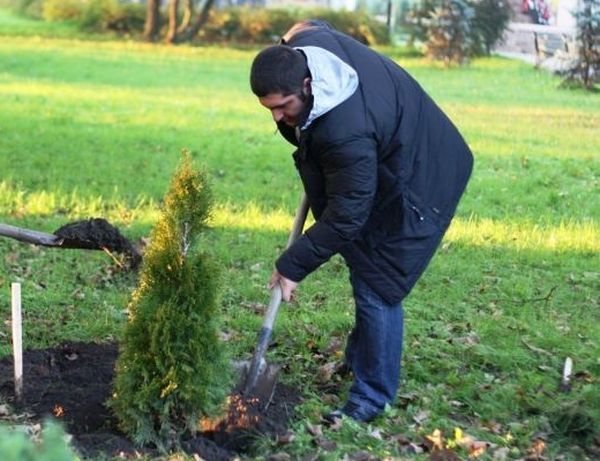
How to carry out autumn feeding of thuja
Autumn feeding of thuja should be carried out correctly, and it has many features. Very often, after feeding, the thuja feels bad, it becomes even more weakened. Something went wrong. Young plants do not require feeding at all, and adult thuja do not require special fertilizers if they grow on fertile soil. If it is planted in a container, and not in open ground, you need to apply complex fertilizers every 2 weeks, regardless of the season.
For those who doubt whether feeding the plant will harm, we can recommend the only type of safe feeding – bedding. For this manipulation, use one of the following materials:
The bedding around the tree allows the soil to be enriched. Such feeding is well accepted by thuami, preventing young shoots from growing intensively. If the soil has been enriched in the spring, mature trees do not need to be additionally fed.
If necessary, liming of saline soil can be used. Gypsum is introduced into the soil before planting trees, after which the soil is plowed. If the soil is podzolic, you need to add quicklime, do this in September-October.
Fertilizers “for feeding thuja
When choosing a fertilizer, you need to take into account the condition of the soil, the condition and age of the tree. The supply of nutrients in the soil can be:
- high (from 5%);
- medium (3-4%);
- low-income (2-3%);
- low (up to 1%).
The following types of fertilizers can be used:
Organic. These are manure, peat, various types of compost. They can quickly deliver nutrients to the soil. Green manure is another popular and effective option. They do not lead to shoot growth after the end of the growing season. Such fertilizers are also used to improve the general agricultural background.
Complex fertilizers for conifers. They are able to provide an attractive appearance of trees, good annual growth. Universal complex fertilizers are not suitable for fertilizing thuja.
Some fertilizers need to be used with caution in the fall:
Nitrogen. Fertilizers containing nitrogen are necessary for feeding lagging and weakened seedlings before planting them in the soil. But before planting seedlings in the ground, such fertilizers do not need to be used, they enhance the growth of the tree. And for winter feeding of thujas, which are grown in containers and pots, fertilizer is suitable.
Potash. Various potassium salts, calcium chloride, sylvinite are fertilizers for conifers that have proven themselves positively. Lack of calcium in the soil leads to the fact that the needles lose their attractive appearance and quickly turn yellow. This can lead to the fact that the upper shoots will die. The introduction of mineral fertilizers with potassium helps to improve the agricultural background.
Bacterial fertilizers. They are used only if the soil has very few nutrients. In acidic soil, liming of the soil is carried out before applying the bacterial fertilizer.
Microfertilizers. Such fertilizers are able to enrich the soil with useful microelements: manganese, boron, molybdenum, cobalt. If the pre-planting seed treatment was not carried out, it is necessary to carry out spot feeding. It is especially important for seedlings in the second year of life.
The frequency and amount of fertilization depends on the age of the trees and the composition of the soil. Industrial fertilizers must be diluted strictly according to the instructions. Autumn feeding of thuja is a complex process; if the feeding is not introduced in time, you can only harm the tree.

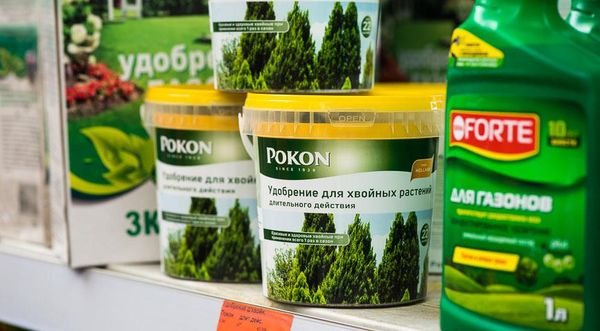
What is thuja
An interesting plant like thuja is used as a decorative element in landscape design. It can be found in parks, squares, as well as on the territory of some significant building. It is found in South America, in all other countries it is grown exclusively artificially.
This tree is also called “life”. It is found not only as a tree, it can be grown in the size of a small shrub, but also as a short plant with flat shoots.
In addition to the fact that thuja gets along well in the bustle of the city, it feels great in the countryside. It is the top of the head that is dense in structure that helps protect the plant from the effects of various kinds of gases, harmful substances and other foreign objects.
Thanks to the efforts of a huge number of gardeners and breeders, there is now a huge number of thujas that show enviable resistance to low temperatures, frost, and at the same time they are able to serve for a long time.
Therefore, the tree can be preserved even in rather harsh conditions. However, in order to achieve this result, the owner of the thuja must carefully observe all the conditions for breeding the tree, and also carry out all agrotechnical work on time.
Therefore, before you get something from a thuja, you need to seriously invest. Particular attention should be paid to preparing the plant for the winter period.
Industrial feeding for thuja
Biohumus-based preparations are a good addition to the diet of conifers. They provide protection against fungal spores and nutrition. Fitosporin-M and Fitosporin-K are often used. The preparations contain potassium and magnesium. The solution is prepared according to the instructions. It is better to process the conifers in the spring. Root watering or spraying can be used.
Autumn feeding of thuja actually begins in the middle of summer. The most common fertilizers for thuja are:
- Stimovit;
- Green Guy for needles;
- Embico;
- Novofert;
- Royal Mix Grane Forte;
- Green food for conifers.
In addition to these dressings, you can use fertilizers for thuja with magnesium. Magnesium deficiency can lead to the death of needles and yellowing of the needles. It must be remembered that too acidic soil reduces the ability to absorb magnesium.

